Yoga has been gaining popularity over the last few decades, and with good reason. It is an effective way to stay in shape and offers numerous health benefits that can make a tremendous difference in our lives. From improving physical strength and flexibility to stress management, enhancing mental clarity, and emotional well-being, yoga is a holistic practice that can benefit us all. In this article, we’ll explore some of the many ways yoga can improve your health so you can be on your way to living a healthier lifestyle!

The physical benefits of yoga are its most widely known aspect; from increased muscle tone and improved posture to better digestion and circulation, there’s no denying how powerful this exercise can be for our bodies. Furthermore, it increases oxygen flow throughout the body, which helps reduce stress levels and pain management for those who suffer from chronic illness or injury. For anyone looking to improve their overall fitness level without putting too much strain on their joints, look no further than yoga for an effective workout routine!
Beyond its physical advantages, yoga offers various psychological benefits, such as reducing anxiety and depression while promoting greater mindfulness and inner peace. Studies have shown that regular yogic practices result in higher self-esteem and more positive outlooks on life – something we could certainly use during these uncertain times. Plus, by connecting deeply with yourself through breathing exercises and mindful movement, you can better understand who you are today and what kind of person you want to become tomorrow!
In short, practicing yoga provides immense potential for improving your general well-being – mentally and physically. By committing even just 15 minutes out of each day towards a simple stretching session or meditation practice, you’d be surprised at how much progress you’d make in feeling happier within yourself and being healthier inside-out!
Yoga Reduces Stress And Anxiety
The sun rises, and the world awakens to a new day. With yoga, you can awaken your soul as well. Yoga therapy is one of the best ways to reduce stress and anxiety while improving mental health benefits. Through its combination of physical postures, controlled breathing, and meditation techniques, practitioners can break down their emotional walls and find peace within themselves.
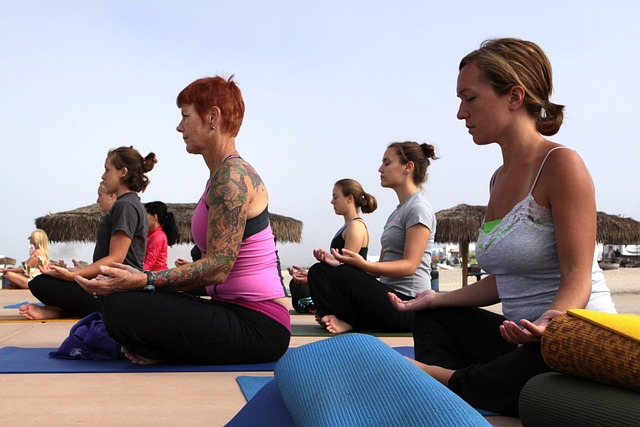
Research studies have shown that regular practice can help decrease negative thought patterns and increase overall mental and physical well-being. Yoga is especially beneficial for those suffering from symptoms of depression or major depressive disorder. This helps connect people back to their true essence so they can face life’s challenges with an open heart.
It’s no wonder why as yoga teacher or a yoga instructor, so many feel at ease on their mats; when we take time for ourselves, our minds become still, and our energy recharges to tackle any obstacles that may come our way. This newfound inner strength comes with confidence, clarity, and a deeper understanding of who we are to the world around us. Ready now to move forward into improved flexibility and balance through yoga practice? Let’s begin!
Yoga Improves Flexibility And Balance
Yoga is a powerful practice that can provide many health benefits. One of the primary advantages of practicing yoga is improved flexibility and balance. Practicing various yoga poses helps you become more flexible and enables you to develop better balance in your body’s physical postures.
To improve your flexibility, focusing on proper technique while performing each pose is essential. Focus on stretching slowly and with control to ensure optimal results. Concentrate on feeling the stretch in your muscles instead of trying to go for the maximum range of motion; this will help prevent injuries and give you more significant long-term gains in flexibility. You should also take regular breaks from pose if you feel pain or discomfort.

Balance poses require not only strength but also concentration and focus. When attempting these challenging poses, keep your breath steady throughout the entire movement – this will help maintain stability and increase mental clarity during practice. With time and dedication, even complex balances and plank pose can become easier with consistent practice, allowing for deeper exploration into other areas of yoga, such as meditation or pranayama (breathwork).
Transitioning now into how yoga strengthens muscles and bones. By paying attention to proper form and breathing techniques while doing various poses in yoga, practitioners can experience an overall improvement in their flexibility and balance over time. This increased mobility has been linked to numerous positive health outcomes ranging from reduced risk of injury to improved posture body weight, – all without ever stepping inside a gym!
Yoga Strengthens Muscles And Bones
Yoga postures are a great way to strengthen muscles and bones. With the support of the consistent physical practice, yogis build muscle strength in all parts of their bodies. This helps promote improved function throughout the body by strengthening core muscles, as well as helping to protect against injury or illness. Through regular yoga practice, practitioners can improve their strength and promote bone health.
Committing to a regular practice can reap many other benefits beyond increased strength and better balance. For example, doing yoga regularly may help with flexibility, coordination, heart health, and even mood enhancement. Additionally, building strong muscles through your yoga practices is essential to overall wellness goals such as weight management and maintaining good posture habits.
The combination of stretching, breathing techniques, and intentional movements is the foundation of any successful yoga practice – it’s more than poses! All these components together create a holistic approach that strengthens our muscles and nurtures us from within too. When we take care of ourselves physically in this way, we become emotionally empowered, enabling us to be better caregivers for others around us. By engaging in regular yoga exercise, we become healthier inside and out to give back even more to yoga community and those who need it most.
In addition to yoga’s ability to improving mental well-being, regular yoga has been linked to improved sleep quality due to its calming effects on the mind and body.
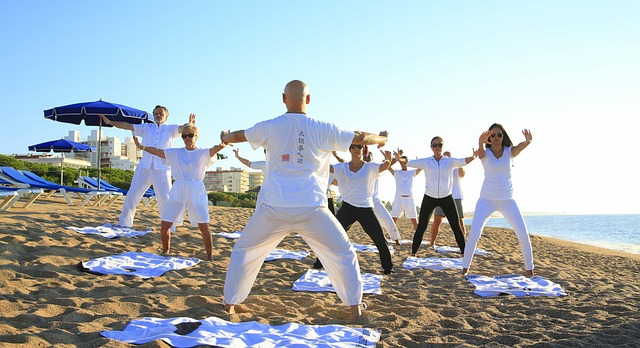
Yoga Improves Sleep Quality
For those looking to find a way to improve their sleep quality, a hatha yoga, may be the answer. Yoga intervention has been widely studied and found to increase one’s overall sleep efficiency and reduce insomnia symptoms. The practice of hatha yoga exercises enhances sleep by calming the mind and body in preparation for restful slumber.
The following are some benefits that come with regular yoga sessions:
- Restful Sleep:
- It reduces stress levels which can interfere with falling asleep quickly.
- Increases melatonin production, which helps regulate your circadian rhythm.
- It helps create better breathing habits so you can fall asleep easier at night.
- Relaxation Techniques:
- Guided relaxation techniques like yoga nidra help relax the body and mind before bedtime.
- Pranayama breath work also encourages deeper breaths, preparing the body for deep sleep cycles.
- Practicing poses such as the child’s pose or supported bridge pose can help release tension from tight muscles, allowing for a more comfortable night’s sleep.
- Improved Circadian Rhythm:
- Regularly attending yoga classes will help reset your internal clock and establish healthier sleeping patterns.
- Longer stretches of postures held longer than usual will stimulate parasympathetic nervous system activity, improving your natural wake/sleep cycle regulation.
Yoga provides numerous health benefits beyond improved sleep quality; studies have found it boosts immune function, increases flexibility, strengthens bones, improves concentration, lowers high blood pressure, and even aids in weight loss and stress management too!
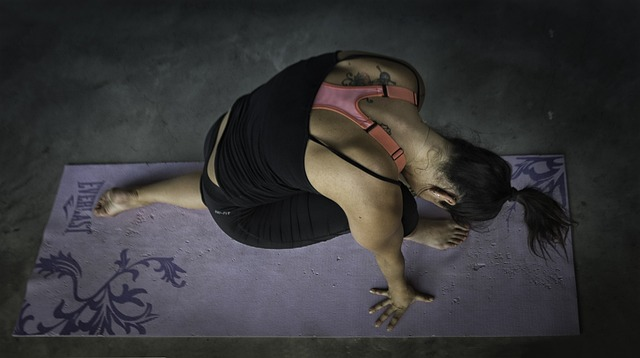
Yoga Boosts Immune Function
Yoga is a powerful tool for strengthening the immune system. When practiced regularly, it can help improve overall health and well-being. We can support our physical, mental, and spiritual needs by consciously applying yoga postures, yogic practices, and breathing techniques. This holistic approach helps us to also boost our immunity by stimulating the circulation of lymph fluid around the body, which carries white blood cells that fight disease.
Therapeutic poses focus on specific areas of the body to relieve pain or discomfort while helping to strengthen those areas simultaneously. Regular restorative yoga asanas can have anti-inflammatory effects on the body, further improving one’s overall health. Additionally, mindfully engaging in movement through yoga postures has been shown to reduce stress hormones such as cortisol, which can negatively affect our immune system when kept at high levels over time.
The power of yoga lies in its ability to bring balance and harmony to all aspects of life – physical, mental, and spiritual – resulting in improved immunity against infection and ill health. So if you want to boost your immune system this season, consider exploring the many benefits of a regular yoga practice!
Yoga Lowers Blood Pressure
As the sun rises and sets, so too can yoga’s effectiveness on our blood pressure. Through yoga, an ancient practice designed to create harmony between mind and body, we can find balance in our lives and regulate our blood pressure with ease:
- Regularly doing yoga helps reduce stress hormones like cortisol which increases heart rate and constricts blood vessels;
- Focusing on breathing exercises during each pose encourages a slower pace of breath which lowers heart rate;
- Different types of yoga, such as Hatha yoga or Vinyasa yoga, help improve circulation throughout the body;
- Incorporating other stretches into your routine can have long-term positive effects for those suffering from chronic conditions often associated with high blood pressure, such as hypertension or chronic pain.
Yoga offers us a way to focus inwardly, helping us connect better with ourselves physically, emotionally, mentally, and spiritually – all of which support healthy vascular health through improved oxygenation and increased endorphin levels that naturally can lower blood pressure and overall tension in the body’s system leading to decreased resting heart rate over time. By practicing yoga regularly, we can achieve greater control over our bodies by allowing them to relax deeply while maintaining alertness. This process is essential for developing healthier habits that will serve us well in other areas of life beyond physical activity behaviors, fitness and managing our chronic diseases and conditions – it also provides the clarity and focus needed for mental well-being.

Yoga Improves Mental Clarity And Focus
Yoga is not just an exercise of the body but also has powerful effects on mental clarity and focus. By combining yogic breathing with physical postures, yoga helps to improve brain function by releasing tension in both mind and body. Studies have found that regular yoga practice can significantly reduce symptoms associated with various mental health disorders, such as an anxiety disorder and depression. It also increases concentration levels by reducing distractions from everyday life.
The combination of rapid, forceful movements and slow dynamic stretching enhances alertness, enabling us to become more productive in our daily lives. Not only does it help us stay focused for more extended periods, but it also eliminates stress-related thoughts that can make clear thinking difficult. In addition, practicing deep breathing techniques like pranayama or alternate nostril breathing releases feel-good hormones into the bloodstream, further improving overall cognitive performance.
By incorporating yogic practices into our lifestyle, we can enjoy improved mental clarity and focus while experiencing inner peace and joy. Increased self-awareness makes it easier to identify negative thinking patterns allowing us to break free from them quickly without letting fear manage stress take over our minds. Consequently, this leads to increased energy levels throughout the day, making us better at tackling tasks that require intense concentration or problem-solving skills – allowing us to be successful in whatever we pursue!

Yoga Reduces Inflammation
The practice of yoga brings with it an array of health benefits that can be felt throughout the body and mind. One such benefit is its ability to reduce inflammation, improving overall physical well-being. Inflammation occurs when our bodies respond to a perceived threat or damage by releasing chemicals into the bloodstream, which cause blood vessels to swell to protect the affected area from further harm. This process can lead to pain, swelling, stiffness, and other issues if left unaddressed.
Yoga offers ways to naturally fight inflammation through meditation, breathing exercises, postures, and asanas (yoga poses). By increasing our body’s flexibility, we can improve blood circulation throughout our body, reducing inflammation. Asanas also strengthen muscles and burn off excess fat, which helps reduce inflammation levels in the body over time. Regularly practicing these poses helps keep inflammation at bay while supporting muscle strength and mobility.
For those suffering from chronic conditions like degenerative arthritis or autoimmune diseases, regular yoga practice can bring much-needed relief by helping manage their symptoms better than medication alone ever could – without any side effects! Furthermore, scientific research suggests that even mild forms of exercise like yoga can decrease systemic inflammatory markers in individuals without medical conditions. Regardless of age or fitness level, everyone stands to gain something positive from incorporating some form of this ancient practice into their lives.
From improved posture and increased energy levels to reduced stress and anxiety, there’s no doubt that adding regular doses of yoga into your routine is beneficial for promoting good health on all fronts – not just fighting away painful inflammations.
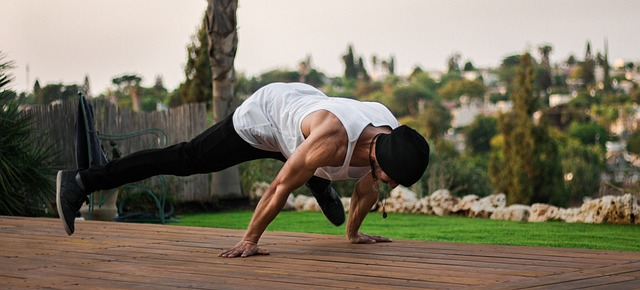
Frequently Asked Questions
Q – How Often Should I Practice Yoga To Experience The Health Benefits?
A – Yoga is a powerful practice. It’s an exercise program has been gaining popularity for its numerous health benefits, but how often should it be practiced to experience the best results? To get an idea of when and how much yoga you should do to maximize your health benefits, let’s discuss some key aspects of this physical activity.
Frequency is one factor that can make or break the success of any exercise routine. For optimal results, it’s recommended that people commit to practicing yoga at least three times per week. However, depending on individual needs and goals, it’s possible to adjust the frequency as needed. If desired, people just beginning their practice may start with twice-weekly sessions before adding more days.
When creating your routine, consider which poses the most benefit to your fitness objectives. The type of poses you select will also determine what kind of benefit you receive from regular yoga practice. Different postures focus on other body areas and can bring about positive changes, such as improved balance, flexibility, strength, and concentration levels. Make sure to include all significant categories: standing poses; seated poses; twists; backbends; forward bends; arm balances; and inversions.
By considering both frequency and form while doing yoga journal designing a personalized yoga program tailored specifically to your needs, you’ll soon reap the rewards of increased energy levels, better mental clarity, and reduced stress—all without feeling overwhelmed by too many hours spent in yoga class, each week!
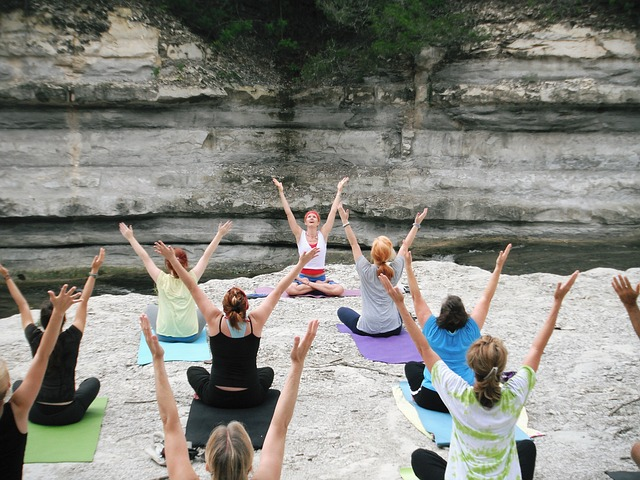
Q – Is Yoga Suitable For Everyone, Regardless Of Age Or Fitness Level?
A – Yoga is an ancient practice that has been used to help people stay fit and healthy for centuries. Whether you’re young or old, a beginner or an experienced yogi, this gentle exercise has countless health benefits. But the question remains: Is yoga suitable for everyone, young adults, regardless of age or fitness level?
The answer is a resounding yes! Yoga is accessible to all ages and fitness levels – both physical and mental. With yoga benefits from its low-impact movements and mindful focus on breathing and relaxation, it’s easy to customize yoga styles and your routine to suit your needs. Even if you think you need help to keep up with more advanced poses, plenty of variations in beginner classes will enable you to reap the same rewards as those who do.
No matter what stage in life you’re at, yoga can be beneficial in some way – physically, mentally, and emotionally. It helps improve flexibility while strengthening muscles; increases energy levels by encouraging deep breathing; enhances balance; reduces stress through meditation; builds confidence, and boosts overall well-being. The list goes on! All these benefits make it an excellent choice for anyone looking to better their health – regardless of age or fitness level.
So whether you’re just starting or have been practicing for years, why not try yoga? You might be surprised by how much healthier (and happier!) you become when participating in this time-honored activity.
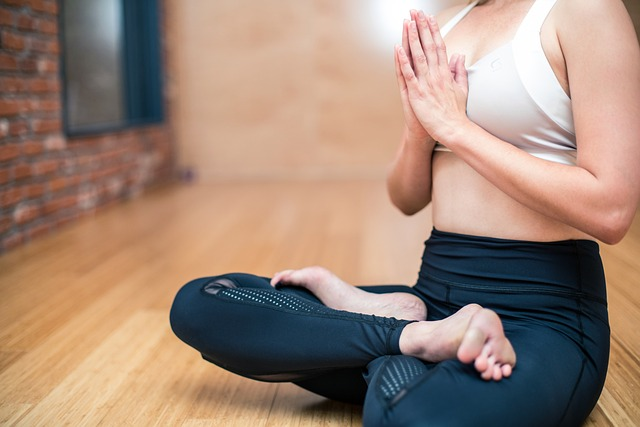
Q – Are There Any Specific Poses That Are More Beneficial Than Others?
A – Yoga is a practice that has been around for centuries, and its many benefits have stood the test of time. Some poses are more beneficial than others, but there’s something to be said for any pose you do on your mat. So which poses should you focus on if you’re looking to maximize the health benefits practiced yoga?
Several restorative poses can help strengthen your body while providing an effective workout. The Warrior Pose (Virabhadrasana) is one of these. This robust posture helps build strength in the legs and arms and improves balance and stability. In addition, it also promotes flexibility in the hips and spine, which helps reduce stress levels. Another great pose is Downward Facing Dog (Adho Mukha Svanasana). This pose increases circulation throughout the body and stretches out the muscles in your back, chest, shoulders, abdomen, and hamstrings. It even improves digestion! Finally, Triangle Pose (Trikonasana) offers numerous physical benefits such as strengthening the core muscles, increasing the range of motion in the legs and torso, stimulating digestion, reducing fatigue, and relieving tension headaches.
Yoga poses offer great physical benefits no matter what age or fitness level you may be at. Whether you choose more gentle yoga poses like Child’s Pose (Balasana) or stimulating ones like Half Moon Pose (Ardha Chandrasana), each can bring about positive changes in mind and body. Allowing yourself to explore different postures with intention can create a sense of inner stillness; this will encourage relaxation allowing healing energy to flow through all parts of our being – making yoga truly invaluable to anyone who practices it regularly!

Q – Does Yoga Require Any Special Equipment Or Clothing?
A – Yoga is a popular exercise and meditation practice known for its many health benefits. In fact, according to the American Osteopathic Association, more than 35 million Americans now practice yoga! With so many people taking up this beneficial activity, it’s no wonder that one may be wondering: does yoga require any special equipment or clothing? The answer is yes—but thankfully, it doesn’t need to be expensive or complicated.
One of the great things about yoga is how little you need to do it. All you need are comfortable clothes that don’t restrict your movements and something soft (like a rug or mat) underneath your body as you practice different poses. Invest in props such as blocks or straps that can help you get into certain positions more efficiently by providing extra support and stability. These tools are optional but can make doing yoga much easier if you have them.
Yoga requires nothing fancy, just a few simple items to ensure that each move is made with proper technique and alignment. Aside from these essential items, accessories like hats and towels specifically designed for yoga practitioners are available. However, these should only be considered after investing in all the essentials since they will only necessarily improve your experience or make practicing any easier.
No matter what type of materials you use while practicing power yoga, remember that comfort always comes first when enjoying the full benefit of hot yoga. And even better – most basics needed for an at-home session hot yoga can easily be found around your house!
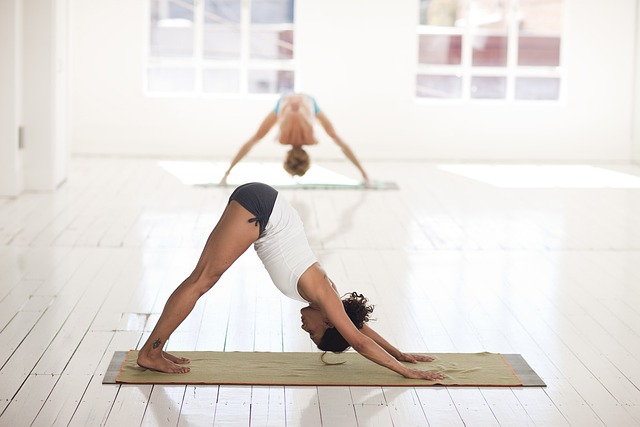
Q – Are There Any Risks Associated With Practicing Yoga?
A – Yoga has been widespread for centuries, bringing many positive health benefits. But with any physical activity, there can be risks associated with physical poses or with the practice. To ensure you get the most out of your yoga experience, it’s essential to understand what those potential dangers of physical poses are so that you can take steps to avoid them.
First, if you’re new to yoga or just starting back up after a long break, be sure to work at your own pace and not push yourself too hard immediately. Listen to your body and don’t try poses that require more flexibility than you have yet achieved; always give yourself time to warm up before attempting anything challenging. Also, pay attention during classes to understand how each pose is meant to be done correctly – this will help prevent injuries caused by the incorrect form.
Finally, while attending an in-person yoga class may seem like the best way to learn proper technique and receive guidance from an instructor, virtual instruction carries some risk due to an instructor’s lack of personal correction on individual alignment and form. So try taking live yoga classes, if available instead of relying solely on online videos for instructions. Additionally, make sure whatever source material you use comes from reputable sources – otherwise, poses could be performed incorrectly, leading to injury.
In short, practicing yoga can bring many great rewards but like any sports medicine or any other physical activity should be approached cautiously. Make sure you listen closely to your body and start slowly when getting into a routine; also, seek out reliable information about correct form whenever possible for real-time feedback about alignment and safety concerns.
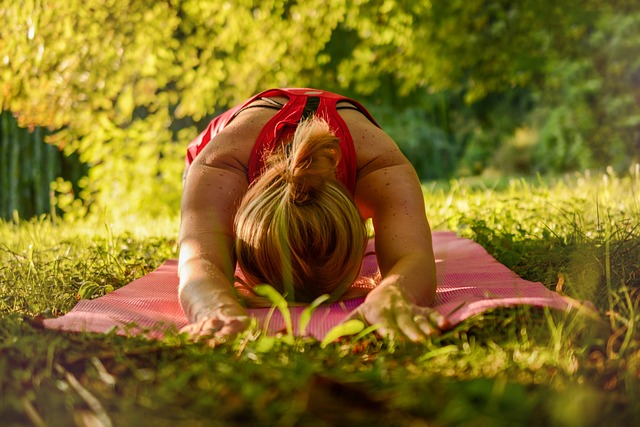
Wrapping It Up…
Yoga has been used for centuries to promote physical and mental well-being. Regular yoga can help you feel more relaxed, energized, and balanced. Whether you’re young or old, a beginner or advanced yogi, there are many benefits to be gained from regular practice. From simple poses like Downward Dog to complex sequences of postures, including Sun Salutations and Warrior Poses, yoga’s possibilities are endless! Getting started is easy: no special equipment or clothing is required. Just find a quiet place where you won’t be disturbed and start moving your body mindfully while focusing on your breath. The health benefits of yoga are truly incredible – it seems yoga’s benefits are almost too good to be true! From improved flexibility and better posture to reduced stress levels and increased energy – yoga is a holistic way to look after your body and soul in just one session. So if you want to experience these fantastic benefits firsthand, dive into your mat today – the rewards will be heavenly!
